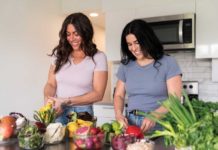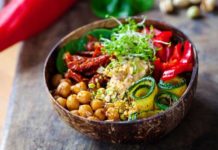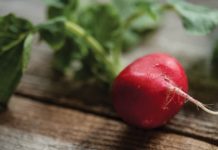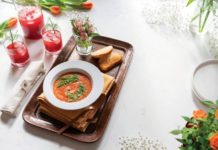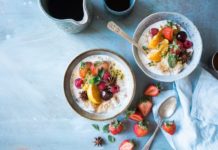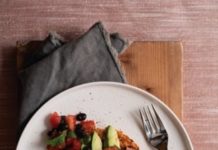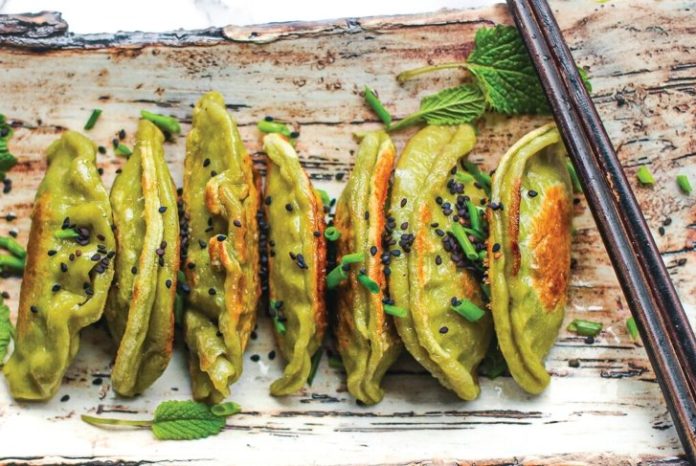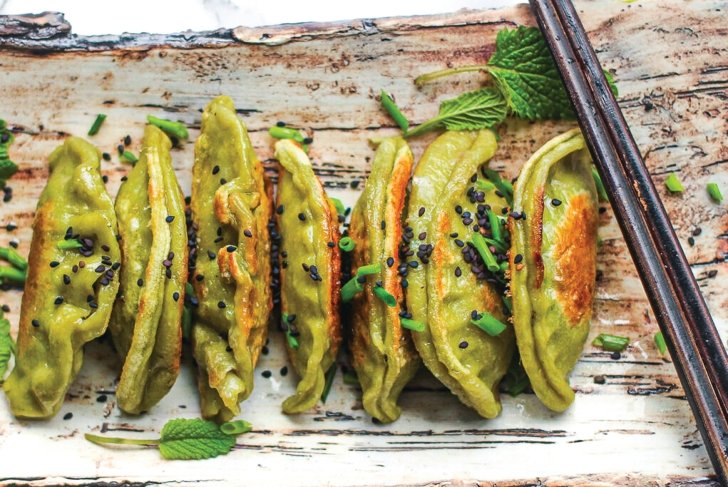
People have been identifying themselves as vegetarians and vegans for years. Then came flexitarians and omnivores. Now, it’s all about “plantivores,” or people following a plant-based diet, usually for their own overall health and that of the planet.
Did you know?
While 63 percent of the approximate 850,000 vegans in Canada are under 38 years old, 42 percent of flexitarians are Boomers.
The plantivore diet encourages people to focus on eating more fibre, vitamins, minerals, and antioxidants in the form of plant-based foods, rather than simply eschewing meat and dairy.
Unlike a vegan diet, a plantivore diet can’t be based on french fries and cheese-free pizza. But being a plantivore means you may occasionally eat animal products while incorporating more plant-based meals into your dinner routine.
How to tell if you’re a plantivore
Do you sometimes swap in chickpeas for chicken? Are you addicted to the peanut sauce on your local vegetarian restaurant’s best-selling rice bowl? Have you spent hours Googling recipes for jackfruit tacos? You might already be a plantivore without knowing it.
For some, becoming a plantivore will be part of a transition to a fully plant-based and vegan diet, and for others not. According to plant-based blogger Susan Pratt, that’s okay.
“You can be plant based and still enjoy your grandma’s lasagna. The vegan police aren’t going to come get you.” The most important thing, she adds, is to feed your body what it needs while trying your best to do no harm to animals.
To Pratt, the difference between vegans and plantivores is that vegans focus on animal welfare rather than on eating whole foods. “Plant-based [eating] is more for health; it’s more whole foods and complete grains,” she says. “Whole foods, by definition, are foods that have been processed or refined as little as possible and are free of additives or other artificial substances.”
That’s why many plant-based eaters on a strict whole foods diet avoid oils and even limit ingredients such as soy sauce, vinegar, and miso paste. “Butters and oils have been processed, with the end result containing very little to no nutrients while being very high in calories,” explains Pratt.
“Soy sauce and vinegars fall under the category of seasonings and can be used sparingly. For someone on a strict whole foods diet, the best seasonings are spices and lemon juice.”
Pratt isn’t so strict, though, which is why recipes on her blog sometimes call for coconut oil, sugar, or vegan butters, such as her Vegan Mimosa Cupcakes and Black Bean Brownie Donuts. She also often offers substitutions and adaptations to appeal to all eaters.
“On my blog, the recipes I share are ones I love and feed my family. We are all vegan, but I don’t follow a strict adherence to any one diet,” she says. “My recipes are flavourful, decadent, and approachable. There’s something for everyone.”
While her personal focus is health, Pratt also understands the ethical side. A horse owner, she doesn’t see a difference between a horse, cow, chicken, or fish. “I love my horse … I couldn’t consume something that wanted to live, not when I knew I could live a healthy, vibrant, and probably better life eating plants and grains,” she says.
Pratt and her husband turned to a plant-based diet three-and-a-half years ago after deciding to have a baby. Their awakening came after immersing themselves in everything they could find about being vegan, including the documentary What the Health. They decided to just try a plant-based diet for 30 days—“and we’ve never turned back.” Now, she and her husband, Randy, have a daughter, who’s also being raised on a plant-based diet.
Despite this, Pratt says she’s only 99.9 percent vegan, though she’ll never again eat meat. “If push comes to shove, if I go to somebody’s home and they make me a meal with dairy and egg in it, I’m going to eat it and be grateful. Because for me, it’s not an allergy; it’s a preference. This diet isn’t an all or nothing thing. Just, ‘okay, tomorrow let’s do our best.’”
Whether 2021 will be the year you become a plantivore and enjoy meat in moderation or potentially go fully vegan, Pratt’s recipes will help you explore how delicious plant-based eating can be.
Helpful herbs and supplements for a plant-based diet
If you’re considering a plant-based diet, you might require some of the following supplements:
- vitamin B12
- vitamin D
- omega-3 fatty acids
- iron
- iodine
- calcium
- zinc
Plant-based blogger Susan Pratt says she gets all her nutrients from food, except vitamin D in winter. Since vitamin C helps absorb iron, she combines oranges with pumpkin seeds, beans, hemp, and flax. And she gets vitamin B12 from fortified oat milk and nutritional yeast.
Tips for getting started as a plantivore
Easy swaps
Try reducing the meat each time you make a dish you like and increase the plant-based ingredients.
Create opportunities to love plants
Consider plant-based eating as an opportunity to add more plants to meals rather than denying yourself something. Throw extra mushrooms, zucchini, or tempeh into curries, soups, chilis, braises, and rice bowls, either alone or in addition to the meat or fish you’d usually add.
Innovate with recipes
Write down plant-based recipes you love, then cook these more often; try variations with different vegetables or grains.
Do your research
There’s plenty to learn about vitamins and supplements; factory farming; and monocrop soy, corn, and coconut production, but don’t forget the delicious research on recipes for jackfruit tacos, buffalo cauliflower wings, and even plant-based cakes.
Get inspired by plant-based culinary traditions
Check out Thai salads, spiced Ethiopian stews, Caribbean rice and peas, Turkish pilafs, or Greek mezze.
Stock your pantry
Stock your kitchen with plant-based snacks and quick-cooking staples (get some inspiration on alive.com with our “Tips for Eating Plant-Based on a Budget”) so you’ll be less likely to reach for non-plant-based foods.
Plant-based sweets
If you have a sweet tooth, try plant-based yogurt in a dreamy custard or peanut butter parfait, layered with a combination of your favourite nut butter, maple syrup, and cocoa powder.
“But where do you get your protein?”
It’s the first question most people ask, says plant-based blogger Susan Pratt. In addition to beans, lentils, tempeh, and tofu, her newest obsession is seitan. “It’s made with vital wheat gluten. It’s low carb, low calorie, and super high in protein.” She often combines it with chickpeas to make complete proteins.
According to associate professor and graduate program director of the McGill University School of Nutrition, Dr. Stéphanie Chevalier, plant-based eaters don’t need to count grams of protein throughout the day, but they do need to ingest enough calories and be aware of eating complete proteins.
The protein digestibility corrected amino acid score (PDCAAS) measures plant proteins as a ratio of a reference animal protein. Plant proteins are less dense and score lower, Chevalier says, since many plant-based proteins lack one of the nine essential amino acids.
“Theoretically, we would need to ingest more of those plant proteins to get the same quality as an animal protein, but combined with another plant-based protein, they can become complete.
“In beans, there’s a limiting amino acid called methionine. If you were to only ingest soy, you would not get sufficient methionine and then you could not synthesize new proteins. In wheat and rice, lysine is the limiting amino acid.
“So, when you mix grains with beans, you give the missing lysine from the beans to the grain and the methionine from the grains to the beans, and you have complete proteins.”
The trick is to combine different types of plant-based proteins that complete each other, such as Pratt’s chickpea and seitan combo. Other combinations include corn and beans or rice and lentils.
Want more plant-based inspo and recipes?
Follow Susan Pratt on Twitter, Instagram, Facebook, Pinterest, and YouTube and visit susancooksvegan.com.



